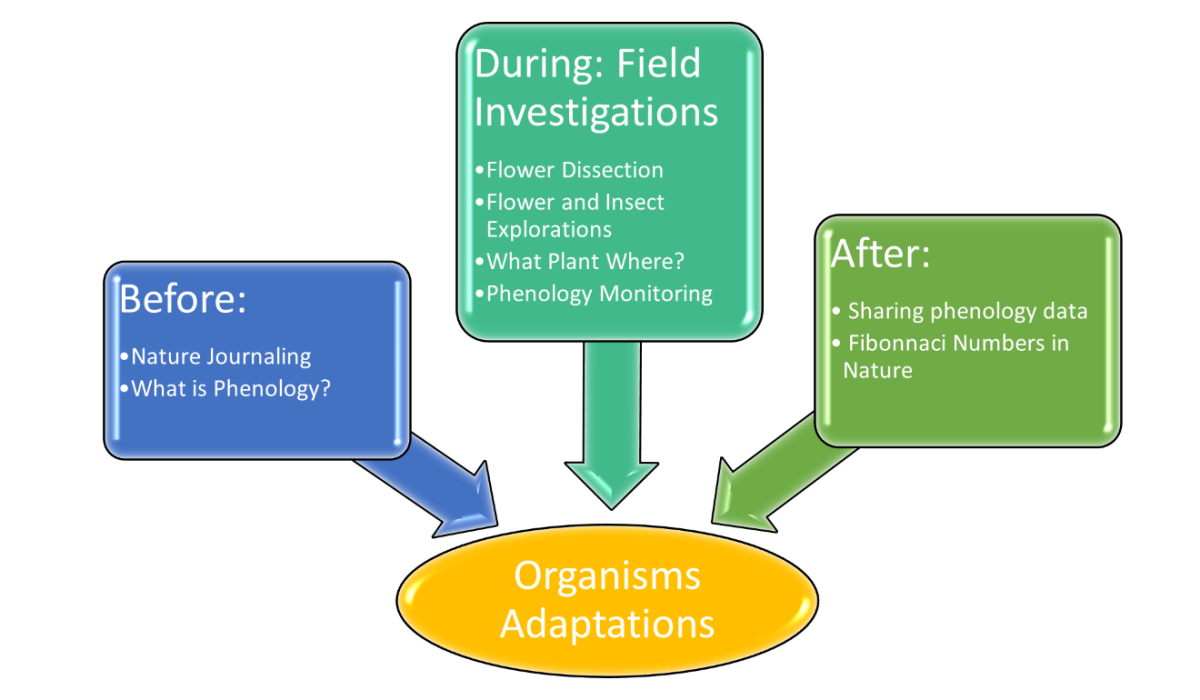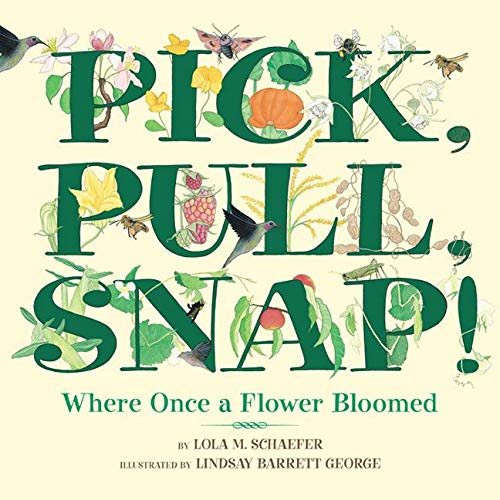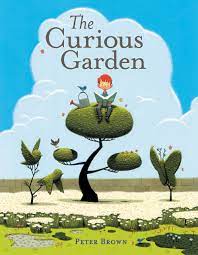Flower Functions
(4th) Learn about the fascinating world of flowers and their structures and functions. Watch students become botanists as they observe and dissect flowers using hand lenses and microscopes to unlock floral structure. Outside, they discover and collect flower and pollinator data as they examine the fascinating adaptations plants and their animal partners have developed with one another. Using critical thinking skills, they interpret the data they have collected. Students develop an appreciation for the diversity of flowers in the Chesapeake Bay Watershed. Fee: $4 per student
Target SOL (for the field investigation. Additional SOL apply to the before and after activities.)
Science (2018): 4.1, 4.2, 4.3, 4.8 Math (2023): 4.MG.1 English (2024): 4.C.1

To enhance classroom connections with the field experience, we have developed this lesson cluster. Field investigations are more meaningful to students when they are integrated into their curriculum. This lesson cluster can be used to introduce and review flowers or synthesize concepts in a systems approach to increase student depth of knowledge. Before-visit activities introduce students to nature journaling and careful observation skills as well as citizen science monitoring projects. With the after-visit activities, students become part of a global community science project, sharing their data. They also find mathematical patterns in nature. Click on each of the sections below to learn more about the cluster's activities. LINK TO Flower Functions Cluster.
NOTE: hover over bolded phrases to find links to resources
Before:
Before-visit activities introduce students to nature journaling and careful observation skills as well as community science monitoring projects.
Before 1: Nature Journaling. Students create journals they use to record observations outdoors.
Before 2: What is Phenology? Students are introduced to community science, phenology and monitoring plants.
During: Field Investigations
During your field investigation at Blandy, your students will engage in several indoor and outdoor lessons where they examine flowers and other plant parts to develop an understanding of adaptations and explore the coevolution of flowers and pollinators.
Below is an overview of the “typical” program activities to assist you with integrating this field experience into the classroom experiences. The activities can change due to weather, the volume of students, or communication with environmental educators. Click here for a sample schedule similar to one that will be used during your visit.
- Flower Dissection- Using microscopes and hand lenses, students examine and dissect flowers to explore adaptations.
- Flower Exploration- Students develop observation skills through close examination of flowers and pollinators. Data are recorded and discussed.
- Phenology- Students are community scientists to observe and record data on plant phenophases.
- What Plant Where? - Students explore and observe native plants for attributes (height, width, flower color, leaf shape, and habitat) important for a diversity of life in a native plant garden.
VA Standards Addressed:
Science (2018): 4.1, 4.2, 4.3, 4.8
Math (2023): 4.MG.1
English (2024): 4.C.1
After:
After-visit activities, students become part of a global community science project sharing their data as well. They also find mathematical patterns in nature.
After 1: Sharing Phenology Data- Students share their data with the scientific community
After 2: Fibonacci- Numbers in Nature- Students explore mathematical patterns found in nature.
Literacy
 Pick, Pull, Snap: Where Once a Flower Bloomed Non-Fiction
Pick, Pull, Snap: Where Once a Flower Bloomed Non-Fiction
Author: Lola M. Schaefer Illustrator: Lindsay Barrett George
Grades: K-5 Lexile: AD690L
Suggested Activities:
- Because the book does not cover pollination explicitly in the main text, this could serve as an excellent assessment opportunity. Scan or photocopy* some of the diagrams. Students can cut them out, then draw or describe the intermediate stages and processes between each diagram.
- Observation opportunities: peas grow quickly and in cool temperatures. Read the book and plant peas in mid-March for harvest in mid-May. Students can pick (or photograph/draw) and align the different stages to make a timeline, dissect flowers and pods, and observe the process of pollination.
*Be sure to follow copyright laws! Use of these images in the classroom may fall under the fair use provision of copyright law (photocopies DO NOT fall under the classroom exemption provision, but may still be considered fair use), but your agency may require you to contact the publisher for written permission (Note that Harper-Collins advises that it could take 10-12 weeks).
 The Curious Garden Fiction
The Curious Garden Fiction
Author: Peter Brown
Grades: PK-3 Lexile: AD840L
Suggested Activities:
- This excellent list of suggested activities from Perfection Learning (PDF) includes language arts, character education, movement and games, art and music, social science, and science. We particularly like the open-ended activity of having students think about plant needs and then act out the process of photosynthesis.

